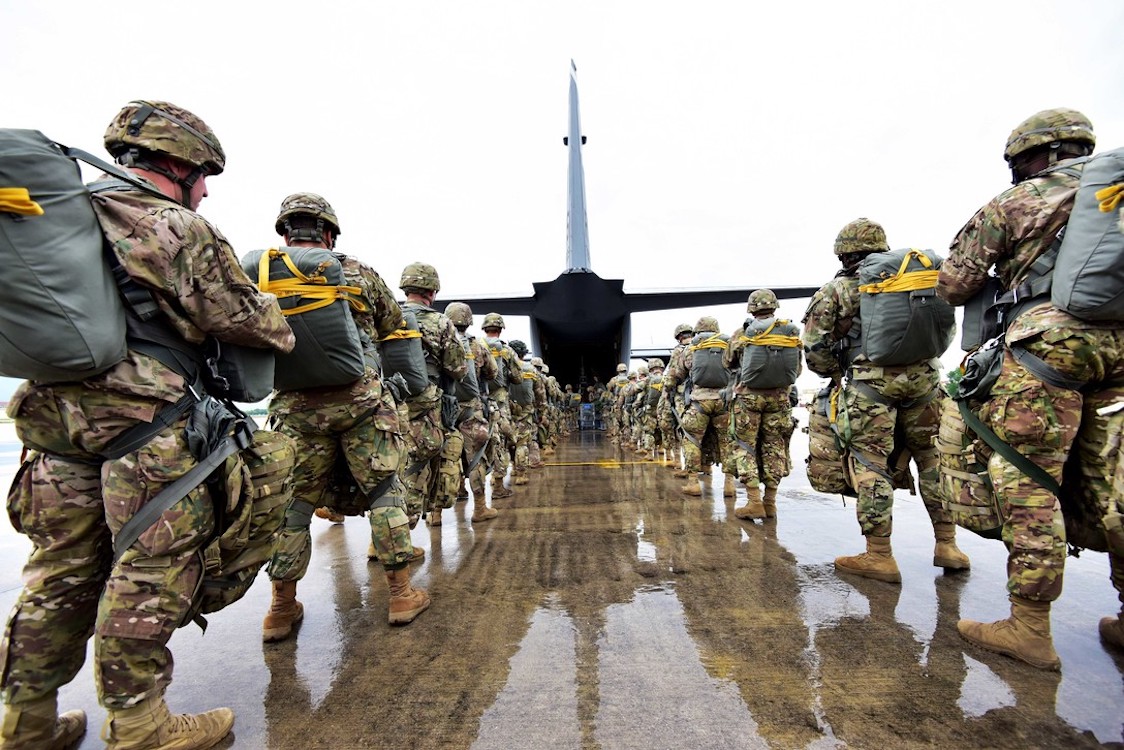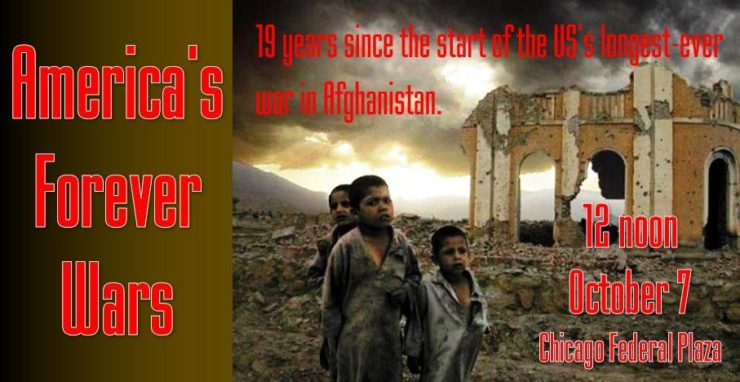
Is there any way for Biden to achieve peace with honor in Iraq, Syria, and Afghanistan?
Robin Wright / The New York Times
(April 9, 2021) — In March, General Kenneth (Frank) McKenzie, Jr., an Alabama-born marine who commands U.S. forces in the Middle East and South Asia, took a whirlwind tour of Iraq, Syria, Afghanistan, and Lebanon—America’s most volatile theatre of operations. Some legs of the trip were made on a C-17, a cavernous aircraft that can hold a hundred and thirty-two caskets, arranged in three rows and stacked on pallets four atop one another, the crew told me. Seven thousandAmerican troops have been killed, and another fifty-four thousand have been injured, in the post-9/11 wars.
When President Joe Biden took office, the U.S. troop presence in the four countries was down to just two per cent of peak deployments, and, technically, these troops are no longer fighting. Their missions are largely limited to helping equip local allies, map strategy, share (or get) intelligence, occasionally provide airpower, and support local peace processes. Yet this last phase of America’s military engagements may be the most confounding. As things now stand, the U.S. can’t “win” in any country. Its allies are still weak militarily. Its adversaries have adapted or even gained strength. And the political morass in each place is as bad—and often worse—as when the U.S. first got involved.
For millennia, politicians, from Cicero to Winston Churchill and Richard Nixon, have opined about “peace with honor” to end military engagements; writers, from Shakespeare and Edmund Burke to A. A. Milne, have waxed eloquent on the challenges. Biden is the fourth President to try to achieve it in the Middle East and South Asia in the twenty-first century. There’s a lot of debate in Washington about what he should do—and whether the U.S. should simply pack up and pull out of the region, which is what it did in Vietnam, in 1973, and in Lebanon, in 1984, under pressure from ragtag militias with vintage weaponry who were better strategists and willing to sacrifice more lives. With the pivot to Asia—a.k.a. China—and American energy independence, why stay longer? From a distance, it’s appealing; from the ground, it’s a more challenging call.
For Biden, his legacy could be either of two extremes—a President who finally extricated America from quagmires in the messy Middle East, or a leader who ceded ground to isis jihadis and the dictatorial Assad regime in Syria, Sunni extremists and well-armed Shiite militias in Iraq, Hezbollah in Lebanon, and the Taliban in Afghanistan. Not to mention Russia, which now has access to bases on the Mediterranean, in Syria, and in Libya, farther west than it’s ever been. Biden’s legacy will shape America’s legacy, too.
McKenzie’s trip coincided with Operation Ready Lion, a massive air campaign against isis fighters along the Iraqi border with Syria. U.S. warplanes conducted a hundred and thirty-three air strikes over ten days—more than in all of 2020—pounding dozens of mountain caves and desert redoubts. Two years after the caliphate collapsed, in March, 2019, there are still between eight thousand and sixteen thousand Islamic State fighters carrying out assassinations and suicide bombings in Iraq and Syria, a Pentagon report noted in February. The latest air strikes killed fewer than thirty fighters.
The parallel problem is that Iraq’s flash points—sharing political power and oil revenues among its sectarian, ethnic, and political blocs—have still not been resolved, eighteen years after the U.S. ousted Saddam Hussein. Even eliminating isis might not end the threat because the tensions that produced extremism have not been addressed. “There’s going to be something that follows isis,” McKenzie told me. “The conditions that gave it birth still exist. So why should we expect different outcomes? The future is not going to be bloodless.”
Just as dangerous in the longer term are the new Shiite militias in Iraq that cropped up to fight isis, between 2014 and 2017, and then physically and politically moved into the spaces that the Sunni jihadis vacated. American Presidents have a bad habit of ordering the military to defeat one bad guy only to generate a cycle of new bad guys that evolve into bigger local or global military threats. Iraq is a prime example. The Prime Minister, Mustafa al-Kadhimi, a Shiite, has vowed to use his limited leverage to rein in the Shiite militias, which have attacked both the U.S. Embassy and Iraqi bases used by the American military. It’s a condition for U.S. forces—whose numbers have dropped from a hundred and sixty-five thousand, in 2007, to twenty-five hundred today—to stay and fight isis. Al-Kadhimi has had little success—and at a political price. Iraq’s Shiites are now split between supporters of al-Kadhimi and backers of the militias—basically over whether they want the U.S. to stay or go. The chasm is so deep, with elections due in October, that American officials worry about a civil war between Shiite factions.

In Syria, McKenzie visited the Green Village, a community of decrepit apartment blocks near a bombed-out oil facility that served as the operational headquarters for the final push to erase the caliphate, in 2019. These days, the only military action there is from U.S. forces firing a 155-millimetre howitzer twice a week into the surrounding desert, at no specific target, “just to say we’re here,” one officer told me. The U.S. military presence—nine hundred troops in the northeast provinces—provides “critical enabling capabilities” to the Syrian Democratic Forces, which are still fighting the ground war against isis in Syria, McKenzie said. “If we left, those capabilities would go away.” Forcing isis underground in Syria has also contained its ability to plot attacks on the United States and Europe, as it did until 2018. “It’s difficult to plan to attack Detroit if you’re listening to a drone overhead and wondering how you’re going to make it through the night,” McKenzie said.
The U.S. military presence could create leverage for its allies in an eventual resolution of Syria’s protracted conflict. What happens in Syria is ultimately going to be a political matter, not a military matter, Lieutenant General Paul Calvert, the commander of U.S. forces in Syria and Iraq, told me during McKenzie’s visit. “We’re holding the space with the S.D.F. to enable a political solution.” The S.D.F. has a big bargaining chip: control over Syria’s major oil fields, which yield revenues that the Assad regime needs to reconstruct the country after a decade of war. U.S. troops are not in charge of the oil fields, as President Donald Trump once claimed. But they do back up the S.D.F. patrols. The U.S. presence also keeps away Russian, Iranian, and Syrian government forces who control most of Syria but don’t want a war for the territory while the Americans—or their airpower—are around. “It’s important that we remain, at least for now, and work with our partners,” McKenzie said.
Coping with the aftermath of the caliphate has produced a separate danger. The S.D.F., a militia that has neither large jails nor a state judicial system, still holds twelve thousand former isis fighters and more than sixty thousand of their family members, whose home countries refuse to take them back. Most of the families are in al-Hawl, a displaced-persons camp that is more like a prison. The family members come from fifty-eight nations, including two dozen in Europe; two-thirds are children under the age of twelve, who get more indoctrination than education. Al-Hawl has become a hotbed of radicalism, a kind of mini-caliphate.
More than forty adults and two children have been murdered—some by guns with silencers—in the past three months. In late March, five thousand S.D.F. troops swept the camp during a five-day operation to try to restore order. “This generation’s going to become a violent, radicalized generation,” McKenzie warned. “It’s all they know. You shouldn’t expect it to be any different if that’s all they’re exposed to.”
In Lebanon, McKenzie visited four bases where small U.S. Special Operations Forces train the Lebanese Armed Forces and coördinate on counterterrorism. isishas penetrated the eastern mountains; members of two cells have been arrested this year. More worrisome, Lebanon has been without a government since August. Its economy is in free fall, and its currency has lost ninety per cent of its value. More than half the population in a country once dubbed the Switzerland of the Middle East now live below the poverty line.
The Lebanese military is the lone state institution still functioning, even as its troops receive a fraction of their promised pay. “We view the L.A.F. as our best hope in that country,” McKenzie said, even as he acknowledged that many of its troops are going hungry. In an aside, one of the commanders who briefed McKenzie told me, “We’re losing Lebanon. It’s only months away.” After the state, the most powerful institution—politically, militarily, and economically—is Hezbollah. Of the many militias in the Middle East, it is the most professional and has the deepest political penetration, the deadliest arsenal, and the biggest treasury.

The most imminent decision for Biden will be in Afghanistan, where the Taliban controls half the territory, even after two decades of war and a trillion-dollar investment by the U.S. After a seven-month deadlock, the Afghan government and the Taliban are due to hold peace talks, on April 16th, in Istanbul, but prospects of an enduring agreement seem slim. Last month, Secretary of State Tony Blinken urged a power-sharing government, which was rejected by Afghan President Ashraf Ghani. He proposes new elections, which the Taliban rejects. Meanwhile, in its own deal with the Taliban, the U.S. is committed to withdrawing the final three thousand troops in Afghanistan—down from more than a hundred thousand, in 2011—by May 1st. Without U.S. support, the Afghan Army is almost certain to lose more turf, potentially even most of the country, to the Taliban. McKenzie’s Central Command estimates that Al Qaeda could regroup under Taliban rule and be able to attack the U.S. within two or three years.
As his policy review wraps up, Biden faces tough decisions on each country. All four are either failing or in existential crisis—which is one of several reasons that more than seventy per cent of Americans want troops in Iraq and Afghanistan to come home, a Koch Institute poll reported in August. “Many Americans view the region mainly as a mess to be avoided,” the retired Lieutenant General H. R. McMaster, the former national-security adviser who was fired by President Trump, said during testimony in front of the Senate Armed Services Committee, on March 2nd. He argued that the U.S. should not disengage for three reasons: competition with Russia and China for influence in the global bastion of energy resources, containing jihadism, and the long-term impact of leaving. “U.S. disengagement from the Middle East would neither conciliate the region’s violent passions nor insulate America from them,” he said.
But others want out. “Washington suffers from a hubristic confidence in its ability to accomplish political goals through military interventions,” Senator Chris Murphy, a Democrat from Connecticut and member of the Senate Foreign Relations Committee, wrote recently in Foreign Affairs. “Instead, the most significant effect of recent U.S. Middle East adventurism has been to fuel perpetual wars that embolden extremist groups and allow anti-American sentiment to grow.”
From afar, it’s easy to make a decisive call. From the ground, it’s a terrifying policy conundrum.
Robin Wright, a contributing writer and columnist, has written for The New Yorker since 1988. She is the author of “Rock the Casbah: Rage and Rebellion Across the Islamic World.”
Posted in accordance with Title 17, Section 107, US Code, for noncommercial, educational purposes.